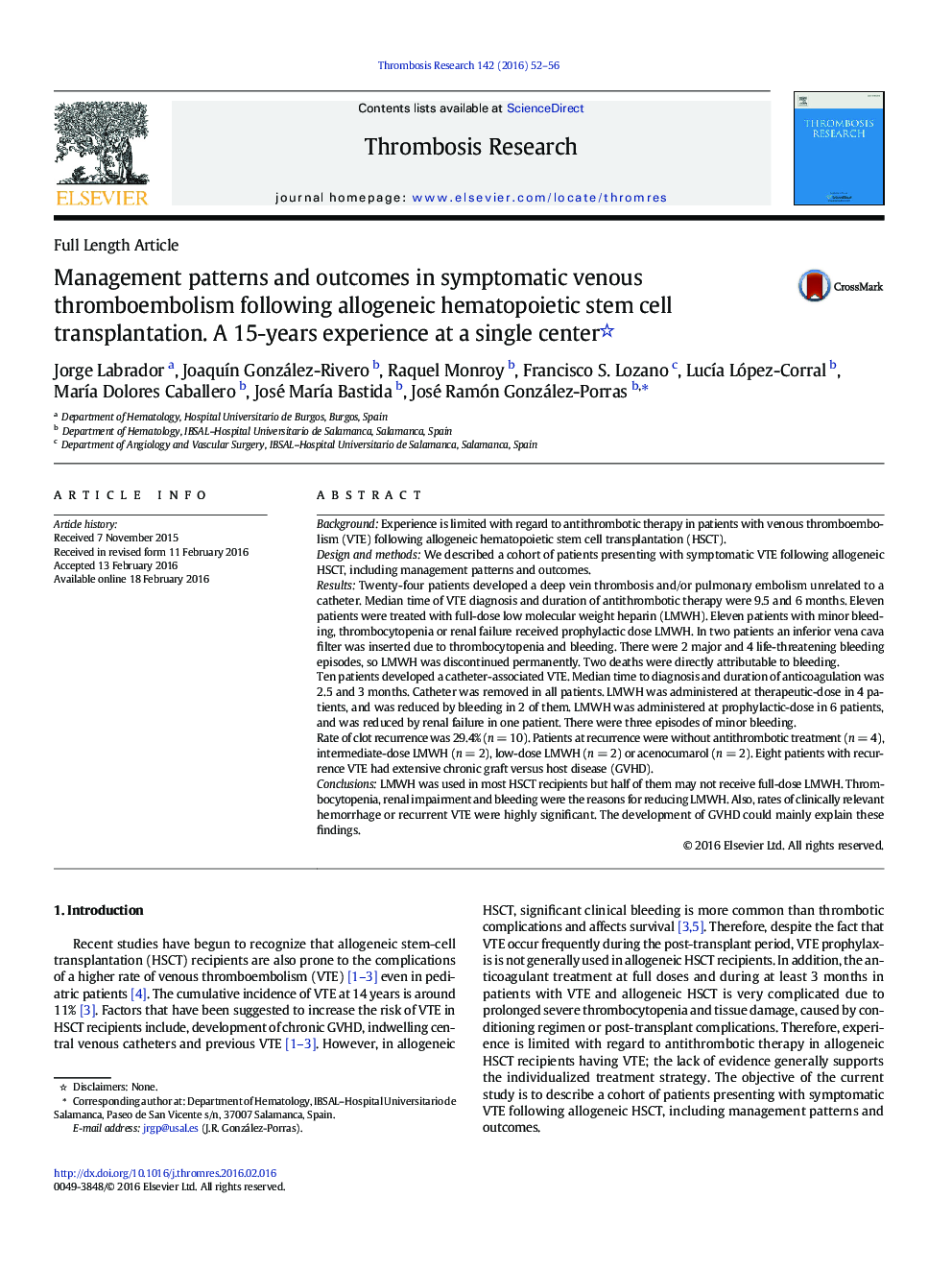| کد مقاله | کد نشریه | سال انتشار | مقاله انگلیسی | نسخه تمام متن |
|---|---|---|---|---|
| 6000519 | 1579201 | 2016 | 5 صفحه PDF | دانلود رایگان |

- Antithrombotic management of VTE following allogeneic HSCT is a complex task.
- LMWH was used in most patients but half of them may not receive full-dose LMWH.
- Thrombocytopenia, renal impairment and bleeding were the reasons for reducing LMWH.
- Rates of VTE recurrence and clinically relevant hemorrhage were highly significant.
BackgroundExperience is limited with regard to antithrombotic therapy in patients with venous thromboembolism (VTE) following allogeneic hematopoietic stem cell transplantation (HSCT).Design and methodsWe described a cohort of patients presenting with symptomatic VTE following allogeneic HSCT, including management patterns and outcomes.ResultsTwenty-four patients developed a deep vein thrombosis and/or pulmonary embolism unrelated to a catheter. Median time of VTE diagnosis and duration of antithrombotic therapy were 9.5 and 6 months. Eleven patients were treated with full-dose low molecular weight heparin (LMWH). Eleven patients with minor bleeding, thrombocytopenia or renal failure received prophylactic dose LMWH. In two patients an inferior vena cava filter was inserted due to thrombocytopenia and bleeding. There were 2 major and 4 life-threatening bleeding episodes, so LMWH was discontinued permanently. Two deaths were directly attributable to bleeding.Ten patients developed a catheter-associated VTE. Median time to diagnosis and duration of anticoagulation was 2.5 and 3 months. Catheter was removed in all patients. LMWH was administered at therapeutic-dose in 4 patients, and was reduced by bleeding in 2 of them. LMWH was administered at prophylactic-dose in 6 patients, and was reduced by renal failure in one patient. There were three episodes of minor bleeding.Rate of clot recurrence was 29.4% (n = 10). Patients at recurrence were without antithrombotic treatment (n = 4), intermediate-dose LMWH (n = 2), low-dose LMWH (n = 2) or acenocumarol (n = 2). Eight patients with recurrence VTE had extensive chronic graft versus host disease (GVHD).ConclusionsLMWH was used in most HSCT recipients but half of them may not receive full-dose LMWH. Thrombocytopenia, renal impairment and bleeding were the reasons for reducing LMWH. Also, rates of clinically relevant hemorrhage or recurrent VTE were highly significant. The development of GVHD could mainly explain these findings.
Journal: Thrombosis Research - Volume 142, June 2016, Pages 52-56